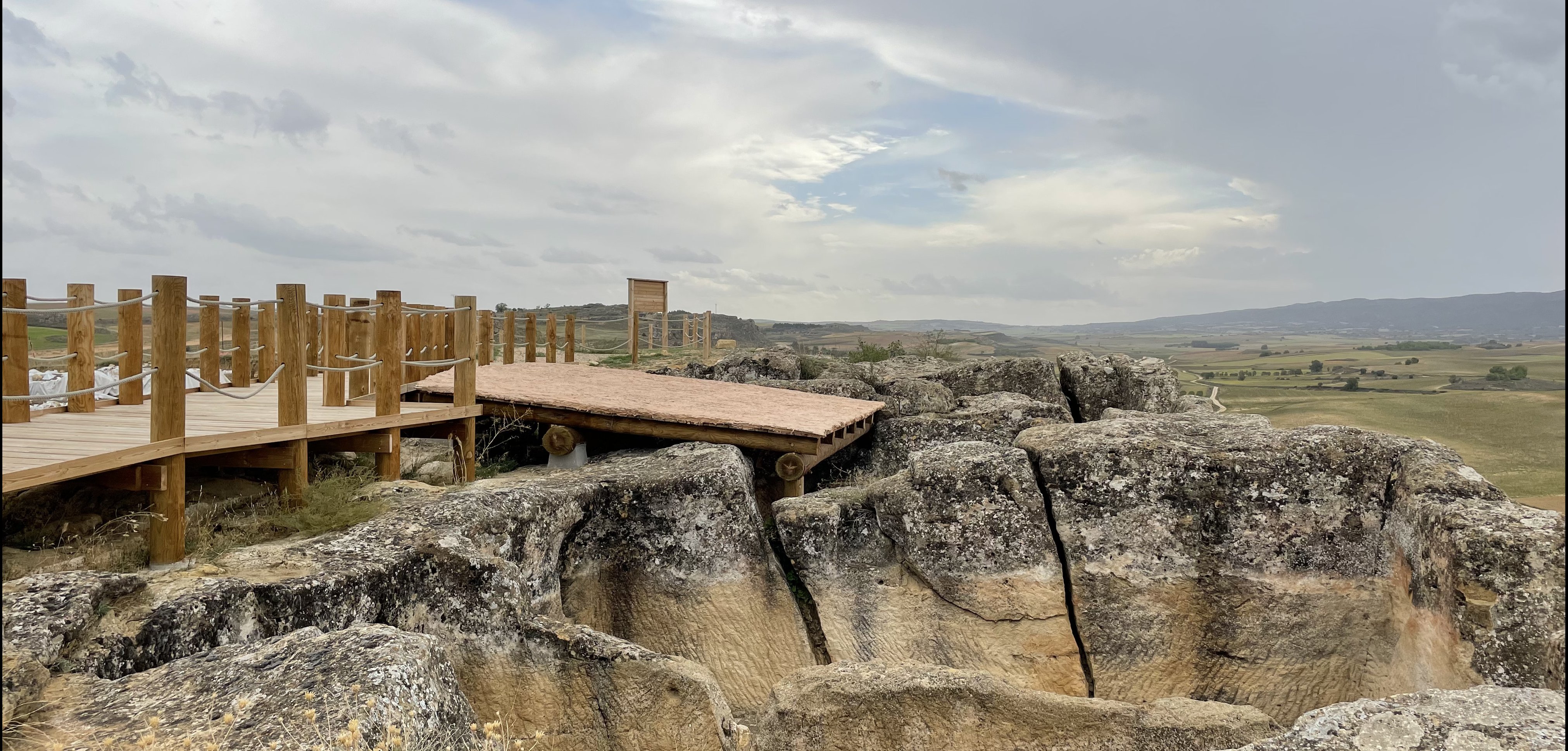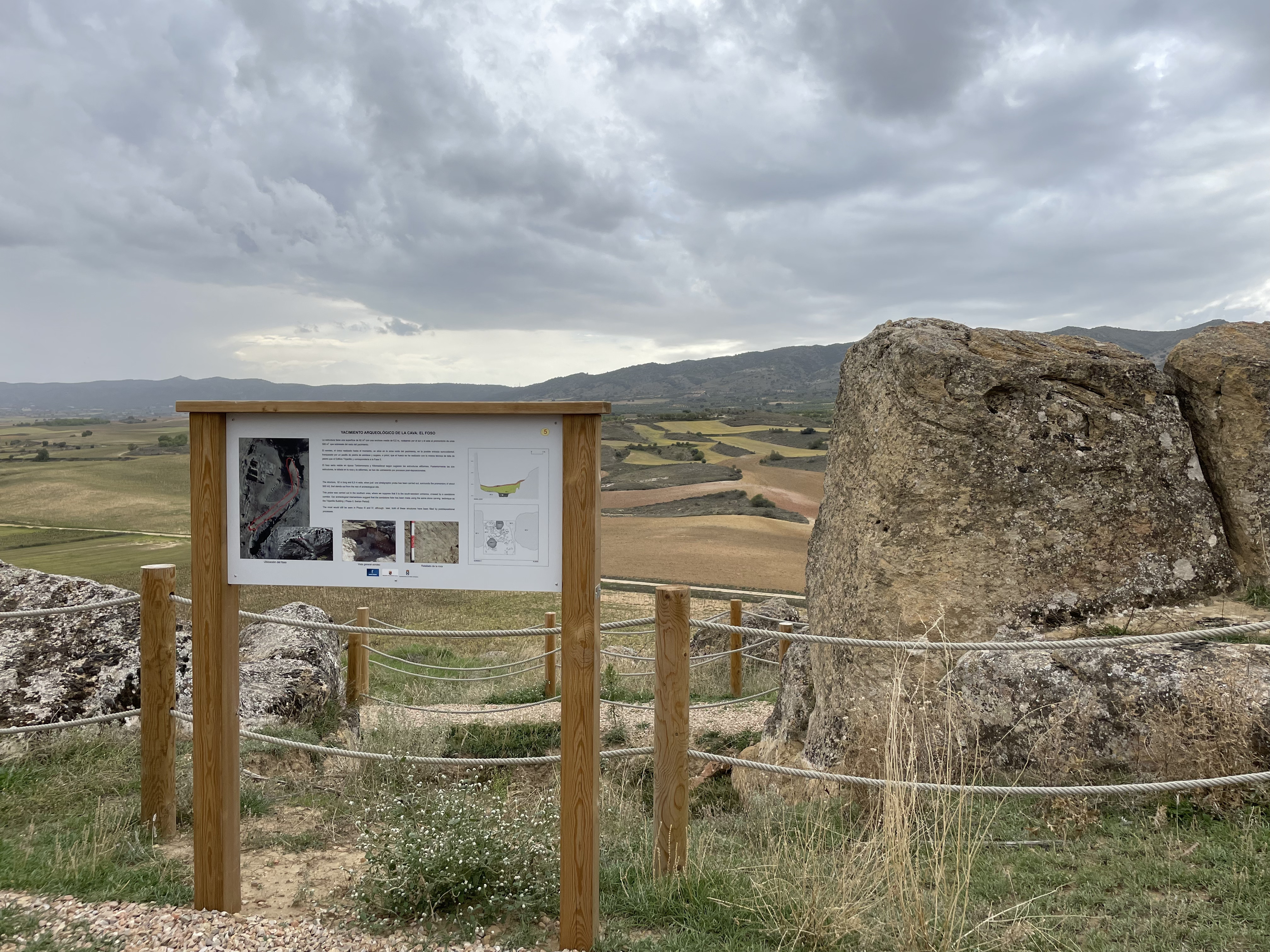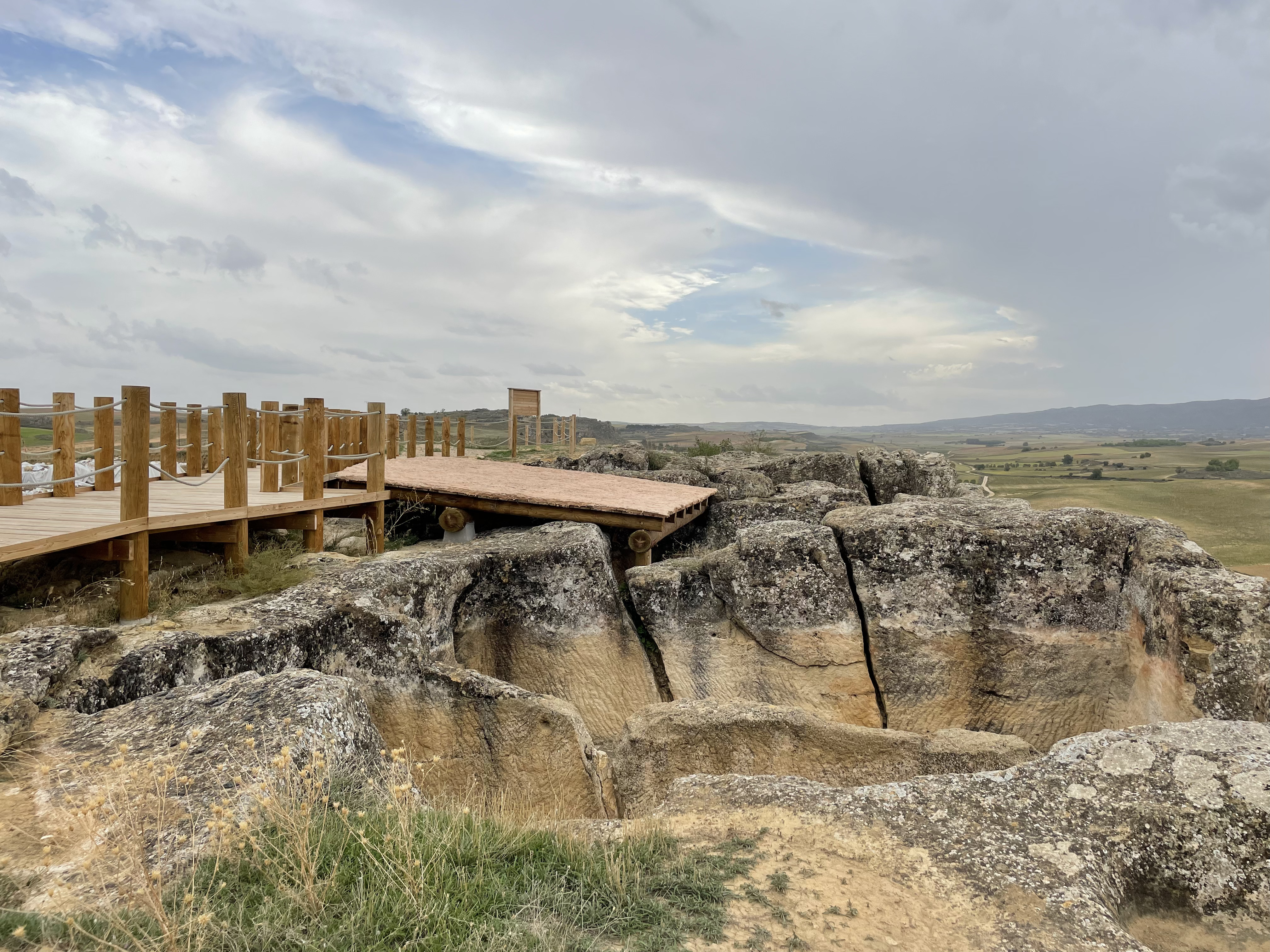
- publicado 02.11.2023
- por Cuenqueando
- La Cavayacimiento celtibericoCeltiberian
La Cava de Garcinarro: a Celtiberian treasure
The Celtiberian site of La Cava de Garcinarro, a historical treasure hidden in the heart of La Alcarria, Cuenca. Join us as we unearth the secrets of this ancient civilization. This settlement dates back to the 4th and 3rd centuries BC, and is one of the most important examples of Celtiberian culture in the Iberian Peninsula.

How to get?
Just an hour and a half from Madrid, La Cava is located at km 28 of the CM-2000 regional highway, 2 km from Garcinarro. Vehicles can be parked in a parking lot from which one of the access paths to La Cava signposted with wooden posts.
The Archaeological Site
La Cava is an archaeological site of 12 hectares with multiple phases of occupation dating back 4,000 years, during the Bronze Age (between 2,500 and 1,000 BC). At this time, in the Iberian Peninsula, settlements were usually located on hills that were difficult to access and often fortified. La Cava is located on the top of a hill, with a practically inaccessible western side, which makes it an excellent defensive position from which you can have a wide view of the area, including the Sierra de Altomira in the background, and control the natural passage that connected the interior with the southern Subplateau, one of the main communication routes on the peninsula.
During excavations carried out in 2015, remains of a wall and other structures were discovered. In addition, within a short distance, there are about 8,000 cups, small cavities of various sizes excavated in the rock by humans, which are considered rock engravings from the same period. This place houses the largest concentration of these small hollows in Spain, although it is still not known with certainty what they were used for.
Celtiberian Origins
However, during the Iron Age (400-450 BC), in the Celtiberian era, the most important part of the site was built. The first investigations carried out in 2013 under the direction of archaeologist Miguel Ángel Valero, revealed the presence of an acropolis sculpted in the rock, in particular, an impressive unique tripartite building, divided into three rooms, dating from the 4th century BC. This building is made up of three quadrangular rooms of approximately 40 square meters each, which are independent but are interconnected by a corridor carved into the rock, with a parapet on the west side that separates it from the precipice. The orientation of this building was important due to the way in which light affects the rooms.
The Celtiberian Legacy
La Cava de Garcinarro is a testament to the rich Celtiberian heritage that has left an indelible mark on the history of Spain. Through the exploration of this site, archaeologists and historians continue to discover new information about this unique civilization.
La Cava de Garcinarro is a historical treasure that connects us with Spain's Celtiberian past. Each excavation reveals a little more of our past, of our history. Take advantage of your visit to discover the hidden secrets of La Cava de Garcinarro.
One hundred years later, this building fell into disuse, possibly due to an earthquake, and was not used again until Roman and later Visigothic times. In that period, it was used as a hermitage, a retreat site for hermits associated with the nearby Servitan Monastery of Cañaveruelas.

How to visit it?
The site can be visited freely but if you want to take a guided tour, I recommend contacting the volunteers of La Cava Cultural Association, who will be happy to show you the most hidden important places of the settlement and its surroundings. You can contact them by phone at 608 64 67 27 or by email at cavadegarcinarro@gmail.com.
Since the first excavations in 2014, the residents of Garcinarro have not stopped working to enhance its value, being very aware of its historical importance and the great economic boost that it represents for the town. In 2017 they set up La Cava Cultural Association to manage and energize what was probably one of the largest Celtiberian settlements on the Iberian Peninsula during the Iron Age.
In addition, Garcinarro has an Archaeological Interpretation Center within the Garcinarro History Museum with exhibition panels that inform about the excavations and the objects found.
Thank you for joining us on this journey through the past, and feel free to explore more of the historical treasures still waiting to be discovered in Cuenca. See you Cuenqueando!
 ES
ES EN
EN PT
PT